PUNK COMES TO THE MASSES:
INDEPENDENT RADIO:
Thanks to a concept instigated by the Whitlam government, the 1970s was a particular fruitful and exciting time for student radio, with stations like 3ST (RMIT), 3SW (Swinburne Uni), 3CT (Caulfield Tech), and 3MU (Monash Uni) in full swing, broadcasting information and music to the collective student consciousness. Stereo FM broadcasting was in its infancy, and by the mid 1970s new licenses were being granted to 'community stations'.1
In 1974 the Community Radio Federation (CRF) was formed at a public meeting held at the Pram factory in Carlton. And in 1975 3ST participated in an ACRN (Austrlian Campus Radio Network) conference which took place at the National University in Canberra. During this same year the station also applied to the Broadcasting Control Board for a restricted Commercial AM license. This application was done under the name of the Student Radio Network Australia (SRNA), with 3ST, 3CT, 3MU and newly formed 3SW. The application was unsuccessful (the license went to 3CR), but their efforts helped in future hearings, particularly when RMIT applied and received an experimental educational FM license later that year.2
Thus on on 10 October 1975, 3CR Community Radio station's broadcasting license was approved by the then Minister for the Media, Dr. Moss Cass. Test broadcasting begun on 1 May 1976, with full operation beginning on 3 July 1976 from studios in High Street, Armadale. The station was Melbourne's first such community radio station to obtain a license with the aim of providing a voice for those denied access to the mass media, particularly the working class, women, Aborigines and the many community groups discriminated against by the mass media.3
On November 17, 1976 the first broadcast of a new radio station coming out of RMIT campus was transmitted across Melbourne's airwaves - that was radio station 3RMT. Also part of the first wave of community radio broadcasting in Australia, the station initially operated on a one-year ‘experimental' license that stipulated that the station broadcast "messages containing matter of an educational character". The first broadcast began with a message from the vice chancellor of RMIT, followed by 25 minutes of literature reviews. Eventually, the students of RMIT were allowed on air to broadcast some music. This first broadcast served as a metaphor for how the station would develop over a larger stretch of time.
In August 1978 the station was granted a three-year ‘E' for educational class public broadcasting license. The station chose 3RRR for its new call sign to symbolise the three ‘Rs' in education and 'R' for Rock. It could also stand for Rebellion, Revelry and Raucousness. The first decade of Triple R was a tumultuous time. Several times the station came close to folding due to financial difficulties. License renewals were often difficult to obtain due to the arcane attitudes of the licensing board. But due to individual and collective ingenuity, passion and determination the station survived many close calls. In the early days the station received a lot of flak for its creative interpretation of ‘educational' and for the strange punk and new wave sounds spreading their seeds across the city.
In October 1976 Felix Hofmann, who had no affiliation with any broadcasting radio station, ran an article in the Southern Cross Newspaper that called for people who were dissatisfied with current radio and concerned with its failure to cater for a broad cross-section of musical tastes. In response around 50 people who were interested in creating an outlet for under represented music turned up for a meeting.4
Soon after the the group registered as the 'Progressive Broadcasting Service Co-operative Limited' (PBS) with the first test transmission occurring from a home studio in Port Melbourne home in 1977. In August 1978 the station was successful in its application to the Australian Broadcasting Authority (ABA) for a license. The first PBS test broadcast took place in the very same Port Melbourne bungalow.6
Ken Fargher was one of the first broadcasters during this transmission.
"The techs had already built a panel and they had it all rigged up in this bungalow out the back of John's house," Ken recalls. "The first fellow to be on was a guy called James and I was the next shift and all of a sudden we had dead air. The whole broadcast went off air and there's technicians running around trying to figure out what's going on...What had happened was that they had a wire going from the bungalow through the house and to some other device, and every time you opened the screen door out the back it crimped the wire and caused the station to go off-air". (Ken Fargher)
After eighteen months of sporadic test broadcasts, PBS went before the ABA and was granted with an "S" (for "Special") Class full-time radio license. Thanks to a PBS co-op member who was also a doctor, a transmitter for the new station found it's home on the roof of the Royal Women's Hospital in Carlton. The next major agenda item was finding PBS a suitable office and broadcast space.7
A newspaper ad was placed looking for premises, and the co-op ended up getting a call from Brian Ballantyne, who then owned the Prince of Wales Hotel in St Kilda, and offered them the rooms out the back of the hotel for nothing. PBS then set about building two studios, a lounge area and a small office at the back of the Prince. The first broadcast from the new premises was on the December 21, 1979. At this point PBS was transmitting at 107.7FM, and the broadcast range was limited. 'Soul Shakedown' parties were held at the at the Prince of Wales to raise money to buy a new transmitter, with bands like Asylum, The Hypnotics and Mental As Anything playing.8
Soon enough however, PBS realised they were outgrowing the Prince of Wales. During the 1980s Ian Stanistreet became PBS's first paid worker. As station manager he was instrumental in securing a new home for the station, just up the road from the Prince, at the Ritz Mansions Building in August of 1984.
During the Punk, Post-Punk and Hardcore Eras 3CR,3RRR and 3PBS were all avid supporters of Punk and New Wave music with music enthusiasts like Bodhan X, Paul Elliott and later Phil MacDougal and Kev Lobotomi hosting their own version of Punk programs. There were also programs based on fashion
"I was doing show on PBS in 1975 called 'Radio Pop'. I started with the test transmissions before they started broadcasting properly and then when they did start broadcasting I had a show on Tuesday afternoons. playing punk and new wave music. Initially it was more overseas music, but I used to have bands on the show like the White Elephants and Bum Steers, bands that were difficult to categorize." (Paul Elliott)
In November 1987, PBS finally secured its transmitter position on top of Mt. Dandenong, in a joint venture with 3MBS and the Ethnic Public Broadcasting Association of Victoria. The move also saw the withdrawal of the broadcasting restrictions, meaning that as of Monday morning on November 16, 1987, PBS was presenting specialist music programming twenty-four hours a day. The new signal change, from 200 to 2,500 watts on top of the mountain also ushered in a change of frequency, from 107.7 MHz to the now familiar 106.7FM.9
Community radio 3RRR had a lot to do with this culture, playing high% of Australian music, putting on gigs, and promoting the fashion parades. Many of the key participants were also 3RRR presenters, or were musicians and/or involved in the growing club scene.xix I was a co-presenter of weekly Bedlam with Party Architecture’s Julie Purvis; graphic designer Robert Pearce presented en masse fashion radio, Philip Brophy’s eek!, etc.
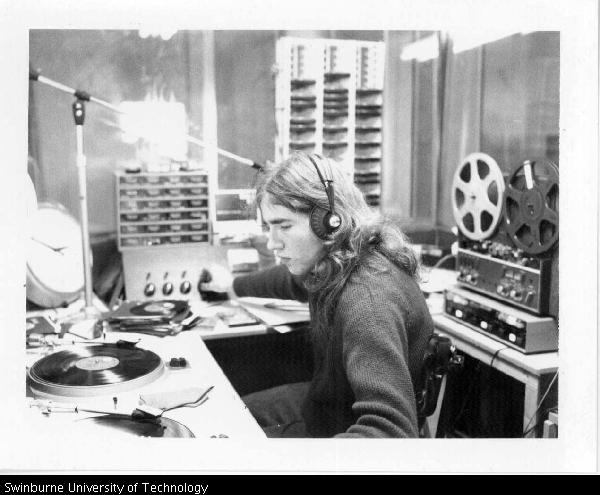

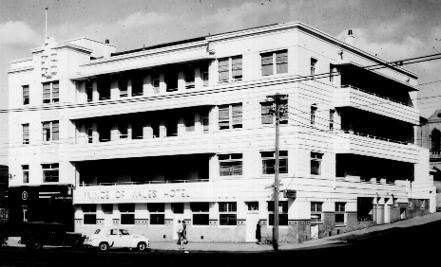
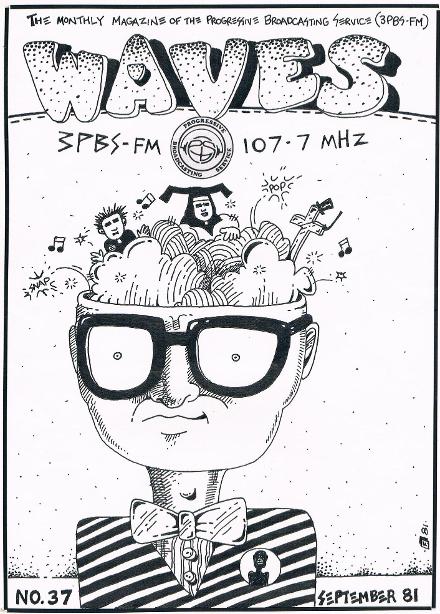
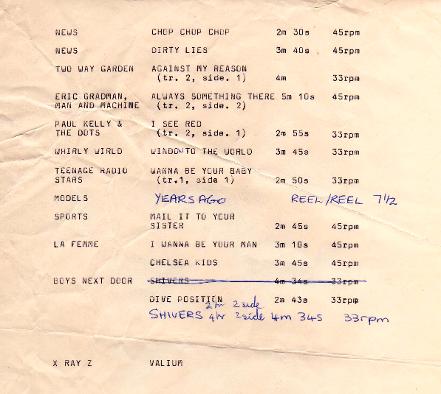
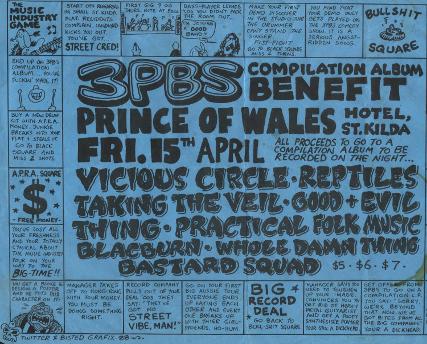
3PBS Benfit gig 1988 - courtesy Paul Elliott
3PBS volunteers 1989 - courtesy 3PBS

|
The History of Roadrunner - 1973-1983 - Donald Robertson.pdf Size : 420.673 Kb Type : pdf |

|
Countdown and cult music television programmes - Liz Giuffre.pdf Size : 277.449 Kb Type : pdf |

|
Gough_Whitlam_Double_J_and_the_Youth_Rad.pdf Size : 378.216 Kb Type : pdf |
Interview with Felix Hoffman 1979 - PBS FM.mp3
Magazines/Music Papers
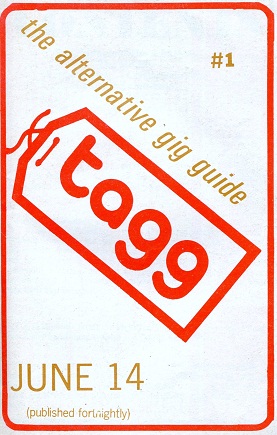
- http://members.tripod.com/~ryan_hub/radio/70s.html
- http://en.wikipedia.org/wiki/PBS_106.7FM
- http://pbs.org.au/history
- http://www.rrr.org.au/about/history/
- http://pbsfm.org.au/tenyearslive